Good evening everyone, Happy New Year and a blessed Christmas season to you all. I am glad to be back in the Archdiocese of Boston during this season and am looking forward to celebrating the Feast of the Epiphany this coming Sunday.
Early last week, I was able to see a lot of my family. My sister Mary Ellen had just returned from China where she was visiting my nephew who is teaching over there for a year. While she was there, they took great interest in visiting as many Catholic churches as they could. In Guangzhou, the city where my nephew is, they went to a beautiful old church that had been built by the French over 100 years ago. But the church was in very bad condition. There was just one Mass there, early in the morning, and people were practicing Christmas carols in Chinese. They said that the people were very friendly to them.
In Hong Kong, they actually went to Cardinal Joseph Zen Ze-kiun�s Midnight Mass. They said the papers were full of attacks against Cardinal Zen because of positions that he has taken. But they said his Mass was so crowded that they had gotten there early and even by then, it was standing room only. Many people were outside, and there were speakers outside so that the people could hear.They also visited the churches on Macao and said there were beautiful old Portuguese churches there. They were able to experience some of the presence of the Catholic Church in China, but at the same time to understand the great challenges that the Church faces there and the pressure that the Church is under.
After I returned to Boston, I celebrated New Year�s with three Franciscan friars � Fathers Don Lippard, Moises and Emilio. They�re three friars whom I ordained and worked with at the Centro Catolico in Washington D.C., so it was very nice to have them here for the new year.
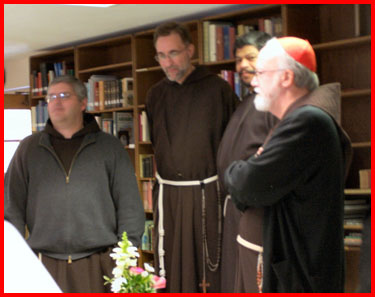
Father Lippard is our vice provincial and just returning from Papua New Guinea where he was teaching philosophy for a semester in the seminary there. He came with Father Moises who is originally from El Salvador but currently works in Washington D.C. Accompanying them was Father Emilio who was 10 years a missionary in Papua New Guinea and has just received permission to go and work in Cuba. We�re all very pleased by that.
The friars accompanied us to St. Mary Parish in Waltham where we had dinner with the priests in the parish, participated in the holy hour and then celebrated Midnight Mass with a reception afterward. It was very well attended and the crowd was quite a representative group of people from all over the archdiocese. There were many Hispanics from the parish, and a neighboring parish�s Ugandan choir showed up and offered to sing at the Mass.
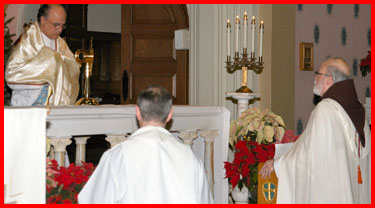
The New Year�s Mass always has a pro-life theme, and during the holy hour, Marianne Luthin gave a very beautiful reflection. She spoke about a woman who was pregnant and doctors told her that her child had many defects and would not live. The doctors kept urging her to have an abortion, but she wanted to bring the child to term. She did, and the child was baptized and then died. The woman had the satisfaction of giving birth to this child, and it was through the Archdiocesan Pro-life Office that the woman found help in doing that. She was not a Catholic but had a sense of reverence for life. Hers is a beautiful witness.
Ever since I�ve been ordained, I�ve celebrated Midnight Mass on New Year�s. I think it�s a good way to begin the new year, asking for God�s blessing. When I was in the Virgin Islands, it was the largest Mass of the year. People couldn�t fit in the churches because the West Indian conviction was that you must end the year in church and begin the year in church. They were all there!
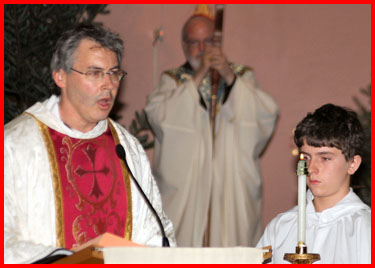
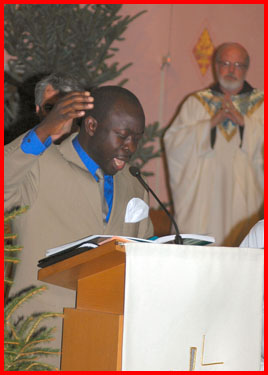
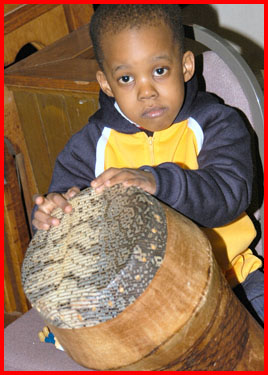
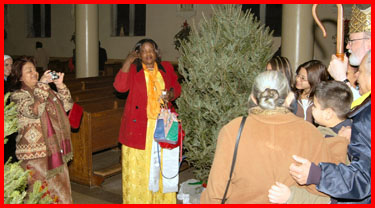
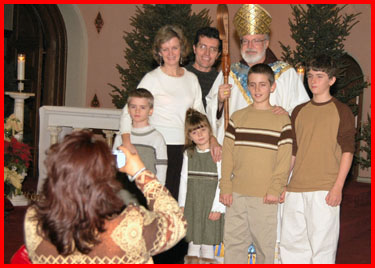
As we begin this new year, I, along with the rest of the Church, hope that the coming year will be a time of spiritual growth and peace. We hope that the conflict in Iraq will be brought to a peaceful resolution and that our troops will be able to come home. We pray that there will be an increase in vocations and a renewed appreciation for the sacrament of marriage in our culture. We also pray that young people will have a sense of vocation to holiness, to married life, to the single state of life � to the religious life and to priesthood � and that our people will live and witness to their Catholic faith in such a way that our faith community will be able to fulfill its mission.
During the coming year, we will be moving towards the bicentennial in 2008 and continue to concretize the plans for celebrations and programs that will mark the 200th anniversary of the archdiocese.
– – –
This past week I also had the pleasure of celebrating Mass with the Haitian community in honor of their Independence Day. Each year since I�ve come here, we�ve had a wonderful celebration at the Cathedral of the Holy Cross on the Haitian Independence Day, the feast day of Our Lady, Mother of God. It�s always a very beautiful celebration and the Haitian priests and lay leaders do a very good job of organizing it. The entire celebration is in Creole and French, and they have a magnificent choir.
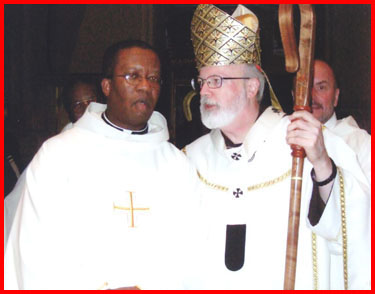
The Mass always concludes with the Te Deum, and the choir sings it in Latin. In the European tradition, the Te Deum is a prayer of thanksgiving and praise. It was a joyful and beautiful celebration, and I�m very grateful that we have a large and active Haitian Catholic community in the archdiocese. Father Gabriel Michel has done a wonderful job as our coordinator for the Haitian ministry.
Here is the Latin version of this beautiful prayer of the Te Deum:
Te Deum laudamus: te Dominum confitemur.
Te aeternum Patrem omnis terra veneratur.
Tibi omnes Angeli; tibi caeli et universae Potestates;
Tibi Cherubim et Seraphim incessabili voce proclamant:
Sanctus, Sanctus, Sanctus, Dominus Deus Sabaoth.
Pleni sunt caeli et terra maiestatis gloriae tuae.
Te gloriosus Apostolorum chorus,
Te Prophetarum laudabilis numerus,
Te Martyrum candidatus laudat exercitus.
Te per orbem terrarum sancta confitetur Ecclesia,
Patrem immensae maiestatis:
Venerandum tuum verum et unicum Filium;
Sanctum quoque Paraclitum Spiritum.
Tu Rex gloriae, Christe.
Tu Patris sempiternus es Filius.
Tu ad liberandum suscepturus hominem, non horruisti Virginis uterum.
Tu, devicto mortis aculeo, aperuisti credentibus regna caelorum.
Tu ad dexteram Dei sedes, in gloria Patris.
Iudex crederis esse venturus.
Te ergo quaesumus, tuis famulis subveni: quos pretioso sanguine redemisti.
Aeterna fac cum sanctis tuis in gloria numerari.
V. Salvum fac populum tuum, Domine, et benedic hereditati tuae.
R. Et rege eos, et extolle illos usque in aeternum.
V. Per singulos dies benedicimus te.
R. Et laudamus nomen tuum in saeculum, et in saeculum saeculi.
V. Dignare, Domine, die isto sine peccato nos custodire.
R. Miserere nostri, Domine, miserere nostri.
V. Fiat misericordia tua, Domine, super nos, quemadmodum speravimus in te.
R. In te, Domine, speravi: non confundar in aeternum.
For those of you who are a little rusty on your Latin, here is the English translation:
O God, we praise Thee, and acknowledge Thee to be the supreme Lord.
Everlasting Father, all the earth worships Thee.
All the Angels, the heavens and all angelic powers,
All the Cherubim and Seraphim, continuously cry to Thee:
Holy, Holy, Holy, Lord God of Hosts!
Heaven and earth are full of the Majesty of Thy glory.
The glorious choir of the Apostles,
The wonderful company of Prophets,
The white-robed army of Martyrs, praise Thee.
Holy Church throughout the world acknowledges Thee:
The Father of infinite Majesty;
Thy adorable, true and only Son;
Also the Holy Spirit, the Comforter.
O Christ, Thou art the King of glory!
Thou art the everlasting Son of the Father.
When Thou tookest it upon Thyself to deliver man,
Thou didst not disdain the Virgin�s womb.
Having overcome the sting of death, Thou opened the Kingdom of Heaven to all
believers.
Thou sitest at the right hand of God in the glory of the Father.
We believe that Thou willst come to be our Judge.
We, therefore, beg Thee to help Thy servants whom Thou hast redeemed with Thy
Precious Blood.
Let them be numbered with Thy Saints in everlasting glory.
V. Save Thy people, O Lord, and bless Thy inheritance!
R. Govern them, and raise them up forever.
V. Every day we thank Thee.
R. And we praise Thy Name forever, yes, forever and ever.
V. O Lord, deign to keep us from sin this day.
R. Have mercy on us, O Lord, have mercy on us.
V. Let Thy mercy, O Lord, be upon us, for we have hoped in Thee.
R. O Lord, in Thee I have put my trust; let me never be put to shame.
The Haitians have a great tradition of dressing up to come to church. It adds a dignity, solemnity and festiveness to the occasion that�s very beautiful. Although the situation in Haiti is always very dire, and the people have great concerns for their family and the stability of their country, there is a great affection and a patriotism among the Haitians.
They have the special custom of having a meal of pumpkin soup that�s a sign of their independence. For them taking the soup is a sign of their freedom, having thrown of the yoke of European colonialism and of slavery and becoming, as they were, the first Black republic over 200 years ago.
I always thought that was quite a contrast with the Irish because we, too, have an expression about taking the soup. There were Irishmen who were starving and the British offered them soup if they would renounce the pope and their Catholic faith.
– – –
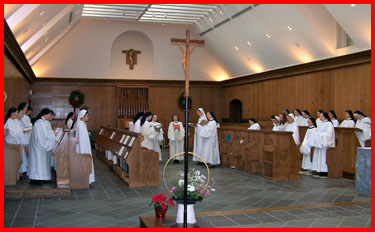
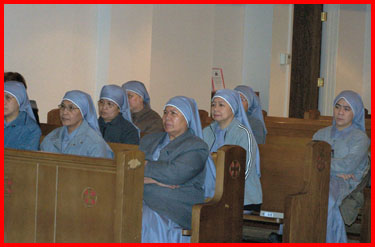
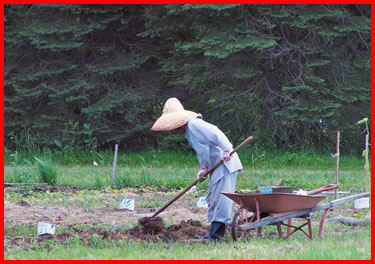
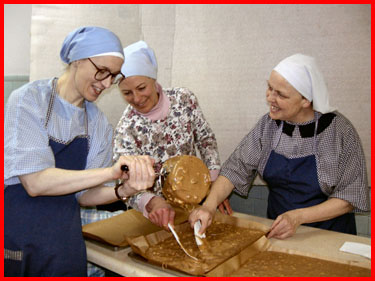
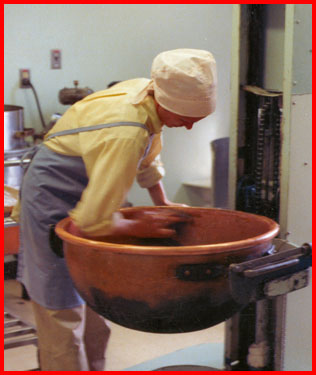

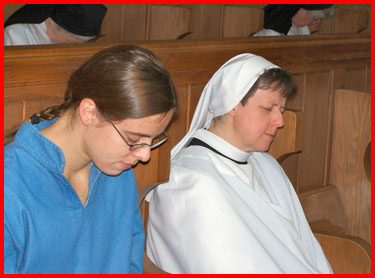

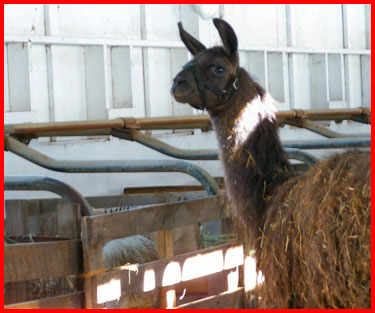

The Trappistine sisters live the spirituality of the Cistercian order. They are a wonderful presence in the archdiocese. They are women who are deeply spiritual and steeped in the tradition and the mystical theology of the Church. It�s a great blessing for us, and their presence is a witness to the interior life and our obligation to worship God and to seek Him in our lives and in prayer.
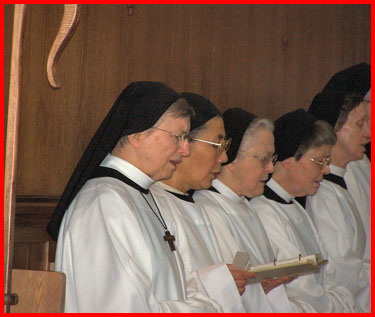
The Trappistine sisters will be having a monastic weekend from Feb. 16-18 for women ages 20-40 who are discerning their vocation in the Church. It is a very important and exciting event. More information can be found on their Web site, http://www.msmabbey.org.
That evening, I visited the Sister Disciples of the Divine Master. They�are sort of the cousins of the Daughters of St. Paul and both orders have the same founder, Blessed James Alberione. We were happy that the Sister Disciples� young junior sisters were at the Mass and the dinner.
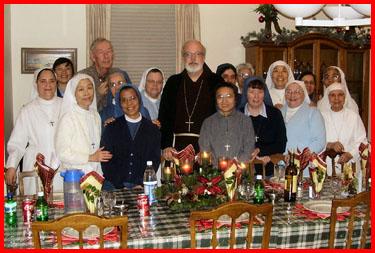
The sisters have a store on West Street and they also have a chapel there with eucharistic adoration. It�s an oasis where the people and the priests of the archdiocese often go to pray and to be in the company of the sisters. We�re blessed to have them here on West Street. It�s right off of the Boston Common, and it�s something of an institution downtown for people to go there to get religious articles and also to have the opportunity to meet the sisters and pray in their chapel.
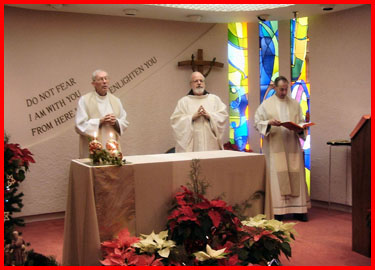
The Sister Disciples in Boston also help as sacristans at the cathedral, so they are often very visible at archdiocesan celebrations. The sisters have an international community, and in Rome they are the sisters who are very much involved in the eucharistic adoration at the basilicas. The congregation is composed of around 1300 members present in 25 countries, spread around the five continents.
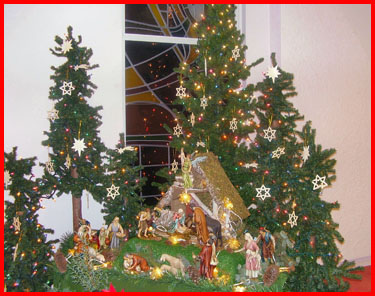
The order�s mission is promoting liturgical art in contemplative prayer and seeing Christ in the priest. The local sisters are very, very supportive of our priests. They have also had sisters working at Regina Cleri, taking care of our retired clergy.
– – –
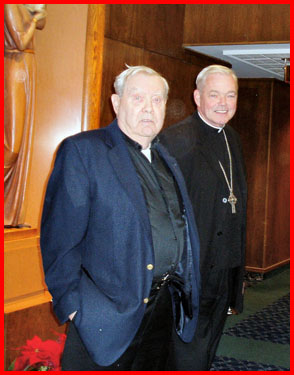
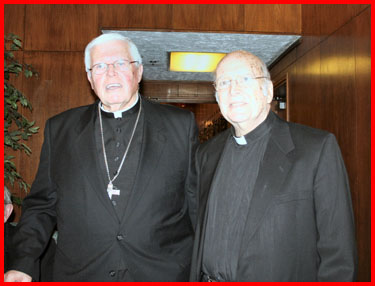
… and Bishop Irwin on the left
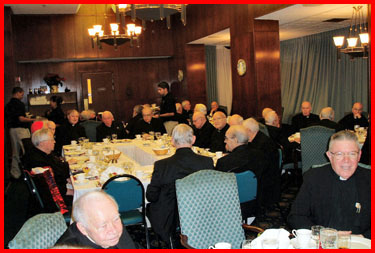
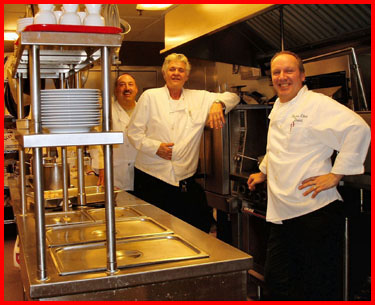
The director of Regina Cleri is Msgr. Jim Tierney who does a wonderful job, and the staff there are all very attentive to our retired priests, in particular to those who are ailing. They also have a wonderful prayer life for the priests there, and I thanked them for that and congratulated them for that. They have eucharistic adoration, they have recollection days once a month and they pray the rosary and have Masses together. It is a great blessing for our priests.
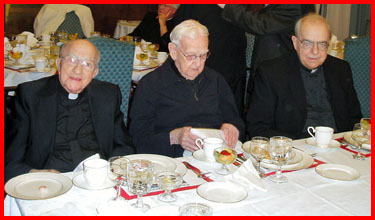
We are very happy to see our retired priests at Regina Cleri who are so well provided for. Some of them are too sick to continue in ministry, but all of them are part of the contemplative branch of our Church, praying for the priests and people of the archdiocese. Many of the priests at Regina Cleri continue to give service in the parishes. Many of our parishes are staffed by one priest now, and the priests at Regina Cleri make themselves available to help with Masses and funerals. One of the priests is 96 and still drives out to his former parish every weekend to help with Masses! The retired priests are all very generous with their time, and they are a blessing for the archdiocese.
– – –
On Jan. 4 I attended an interfaith service for the new governor, Deval Patrick. It was very ecumenical with people from Christian, Jewish, Sikh and Muslim backgrounds, and there was much symbolism in the service. Patrick is our first black governor in the Commonwealth, and that is an important milestone. The service was in a church, the Old South Meeting House, where Benjamin Franklin was baptized and where the Boston Tea Party was planned. So much history of our state and our country took place there.
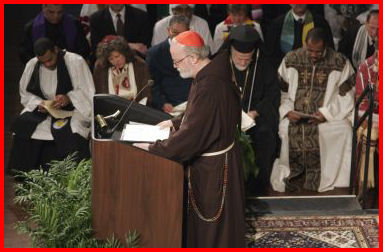
Rev. Peter Gomes of Harvard�s Memorial Church, gave the reflection. He pointed out that the upper gallery in the church was originally for the slaves, so obviously showing that we�ve come a long way from the time when Black people were slaves sitting in the upper gallery of church to now with the first Black governor in the Commonwealth.
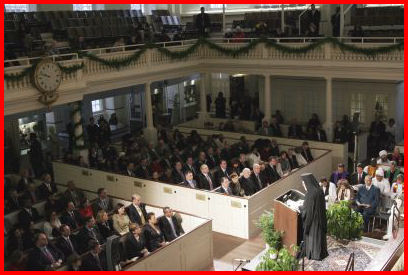
– – –
This coming Sunday, the Feast of the Epiphany will be celebrated. Traditionally the Epiphany is the 12th day of the Christmas season, and now it�s been moved to Sunday in our country to increase observance by American Catholics. In many countries it�s the day when gifts are given.
The theology of the Epiphany is that the magi represent God�s manifestation to the gentile world, an indication of God�s universal love. In the Middle Ages there was the tendency to begin to portray one of the kings as African, one as Asian and one as Caucasian to indicate the universality of God�s love: That the Lord came to be a part of the entire human family and call all of us to salvation. In the United States the Epiphany also begins National Migration Week.
I usually celebrate the Spanish Mass at the cathedral on the Epiphany. The Hispanic community celebrates the Epiphany very much as a Christmas service and we have so many people from Puerto Rico in our archdiocese. In Puerto Rico, the Epiphany is almost bigger than Christmas.
– – –
The photo of the week is a picture of a statue I received last year at an ordination of a Capuchin friar in Louiza Aldea, near San Juan. They gave me a piece of Puerto Rican folk art representing los Santos Reyes. In Puerto Rico they always talk about los Reyes � the kings � rather than the magi. Typically los reyes in Puerto Rico are portrayed as horsemen, not on camels. In the parades of Puerto Rico the three kings come on horseback and the children carry straw to feed the horses. This image carved out of wood is a typical Puerto Rican image of Los Santos Reyes.
�

�
In next week�s blog, I plan to speak about vocations to the priesthood and religious life. Next Wednesday, I will be attending a �St. Andrew�s Dinner,� with high school students who are open to considering a vocation to the priesthood. If you, or some young man you know, may be hearing God’s call, feel free to contact Father Dan in our Vocations Office at 617-746-5949 for more information on the St. Andrew’s Dinner or visit our Vocations Office Web site.
